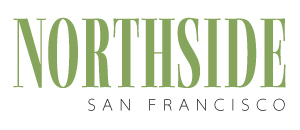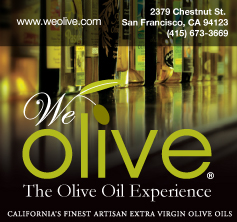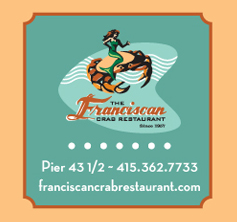Then there’s the St. Francis here in San Francisco – now officially called the Westin St. Francis. Yes, exciting and sometimes saucy theatrics have taken place there over the years, but let’s not get ahead of our story.
The hotel has been an important part of the history of this raucous city since its doors first opened on March 21, 1904. In 1849 a somewhat primitive St. Francis Hotel was built in San Francisco at Clay and Dupont Streets near the Gold Rush town’s Portsmouth Plaza. It was destroyed by fire in 1853.
Just as an exuberant San Francisco ushered in the 20th century, trustees for the heirs of railroad baron Charles Crocker invested $2.5 million and set about to create an establishment that would make San Francisco the “Paris of the West.” After studying great hotels of Europe, including Claridge’s and the Paris Ritz, as well as New York’s Waldorf Astoria, San Francisco’s St. Francis Hotel was announced with great fanfare.
The new St. Francis, planned as two steel-braced towers, would be on Union Square, a rather quiet residential area not far from downtown. It opened with 250 rooms and soon became the center of San Francisco’s cultural, social and political life.
Then of course, on April 18, 1906 the great earthquake and fire changed everything. The St. Francis, with its steel beams, was damaged by the earthquake but still stood; however, the subsequent fire gutted it. Within a few weeks a temporary replacement went up on Union Square. It was demolished to make room for the return of the real St. Francis that reopened on Dec. 1, 1907. San Francisco’s elite returned to the recreated hotel whose china soon sported a phoenix as a symbol of its rising from the ashes. A third wing was added in 1908 and a fourth in 1913.
From that point on the St. Francis never really looked back, and one is tempted to say, “and the rest is history” and of course, it is. In 1971 the hotel’s 32-story tower complex opened. Over the years it has been in sync with the mood of the City most of the time. The enduring St. Francis has been the symbol of the city’s power elite with an impenetrable cachet. Trying to imagine San Francisco without the St. Francis is much like trying to envision New York without Grand Central.
Those are the bare bones of the St. Francis story. But let’s put some meat on those bones and romp through 100 years of high drama and low comedy at the hotel.
HIGH SOCIETY: S, M, L, and XL
Right from the start the St. Francis was the San Francisco haven for what its raw-boned westerners called society – high or otherwise. The most distinguished San Francisco families found the St. Francis just the place for weddings, birthdays, social chitchat, and one-upmanship. Monday luncheon in the hotel’s Mural Room became an elaborate social ritual with “rules of engagement” – a seating location order as precise as the order of pieces on a chessboard. And its queen was Eleanor Martin, doyen of a prominent clan of electric power capitalists, dynastically in the highest echelon of San Francisco society. If Eleanor Martin found in your favor, you were graced with a table in a prominent Mural Room location. If not, Siberia.
When Martin died in 1932, no society matron-in-training filled her shoes. In stepped a Swiss headwaiter named Ernest Gloor, who for the next quarter of a century ran the Mural Room with an iron hand. It wasn’t until after World War II with its egalitarian upheavals that the social ranking practice disappeared. Along the way so did the Mural Room. Gloor and Martin had ranked San Francisco society into sizes like t-shirts – S, M, L, and XL. Today San Francisco society likes to pretend that one size fits all.
SUPERSTAR CHEFS: FROM HIRTZLER TO MINA
By all accounts Victor Hirtzler, chef de cuisine who opened the St. Francis in 1904, was a superstar. With his kitchen whites he wore a red fez and sported a goatee. Hirtzler was born in Alsace in the mid to late 19th century and was cooking by the time he was 13. Legend has it he was a food taster for Russia’s Tsar Nicholas II and later became chef for King Don Carlos of Portugal. A favorite Hirtzler story goes like this: In 1916 Hirtzler prepared a luncheon for Charles Evans Hughes who was running against Woodrow Wilson for president. The California vote would be crucial. A lavish San Francisco banquet for Hughes was arranged at the Commercial Club, and the famed Victor Hirtzler from the St. Francis would prepare the meal. When Hughes was seated the waiters walked out on strike. We are told that Hughes was prepared to honor the strike, but our man Victor convinced him otherwise. The next day handbills proclaimed Hughes to be nonunion. On Election Day, Wilson defeated Hughes by slightly more than 3,500 votes, approximately the number of union waiters in San Francisco.
Through the years the St. Francis has lived on the legend of Victor Hirtzler and many notable chefs have symbolically inherited his fez, including high-powered chef Michael Mina.
Ernest Beyl has roots in the St. Francis. His father was a cook who worked at the hotel for chef de cuisine Victor Hirtzler. E-mail: ernest@northsidesf.com








